Parkha
Parkha
| South East | South | South West | ||
 Zön 4 |
 Li 9 |
 Khön 2 |
||
| East |  Tsin 3 |
 Da 7 |
West | |
 Khin 8 |
 Kham 1 |
 Khen 6 |
||
| North East | North | North West |
 and solid lines
and solid lines  where the broken line represents Yin (passive)and the solid line Yang (active). Yin and Yang are each others complement and represented by:
where the broken line represents Yin (passive)and the solid line Yang (active). Yin and Yang are each others complement and represented by:
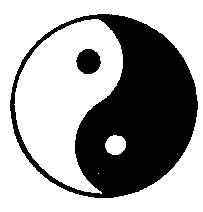
| Yin | Yang |
|
|
Each Parkha has his own unchangeable direction and element
| Parkha | Direction | Element |
|---|---|---|
|
|
|
Year of birth Parkha
For male this is always "Li" ( with element Fire )
For female this is always "Kham" ( with element Water)
Birth Parkha
The
birth Parkha depends on the age of the person, the age of the mother and on the type of calculation.
There are three calculation methods.
The first called lineair, the second called single zigzag and the third full zigzag.
In all cases take the age of the mother, subtract the age of the person and add 1. ( or take the age of the mother at birth of the person and add 1 )
Lineair
Divide the result by 8. The remainder is used to find the birth parkha.
E.g. Male 61 Mother age 90 gives ((90 - 61 ) + 1 ) : 8 = 3 remainder 6.
Start always at Kham and count anti clockwise the remaining count.
Kham = 1, Khen = 2, Da = 3, Khön = 4, Li = 5, Zön = 6 which is the birth parkha.
Single zigzag
The single zigzag method is more complex as there is a diagonal jump at a count of 10
E.g. Male 61 Mother age 90 gives ((90 - 61 ) + 1 ) = 30
Start at Kham = 1, Khen = 2, Da = 3, Khön = 4, Li = 5, Zön = 6, Tsin = 7, Khin = 8, Kham = 9, Khen = 10.
Now do a diagonal jump to Zön = 11, Tsin = 12, Khin = 13, Kham = 14, Khen = 15, Da = 16, Khön = 17, Li = 18, Zön = 19, Tsin = 20, Khin = 21, Kham = 22, Khen = 23, Da = 24, Khön = 25, Li = 26, Zön = 27, Tsin = 28, Khin = 29, Kham = 30..
Full zigzag
The full zigzag method is the most complex as there are jumps at a count of 10 and than jumps at every count of 11.
E.g. Male 61 Mother age 90 gives ((90 - 61 ) + 1 ) = 30 count
Start at Kham = 1, Khen = 2, Da = 3, Khön = 4, Li = 5, Zön = 6, Tsin = 7, Khin = 8, Kham = 9, Khen = 10. Now do a diagonal jump to Zön = 11, Tsin = 12, Khin = 13, Kham = 14, Khen = 15, Da = 16, Khön = 17, Li = 18, Zön = 19, Tsin = 20, Khin = 21
Now do a diagonal jump to Khön = 22, Li = 23, Zön = 24, Tsin = 25, Khin = 26, Kham = 27, Khen = 28, Da = 29, Khön = 30.
Algebraic: (count + ((count : 11) * 3)) : 8 -> (30 + ((30 : 11 ) * 3 )) : 8 -> (30 + ( 2 * 3 )) : 8 -> 36 : 8 = 4 and remainder = 4 use remainder start at Kham = 1, Khen = 2, Da = 3 and Khön = 4
Changeable Parkha
The changeable parkha is used to find good and bad directions for e.g. positioning of furniture, direction of travellng and medical treatment. To find the changeable parkha for a male of female use the following way. The count used is the age plus one.
For a male start at Li and count clockwise.
For a female start at Kham and count anti clockwise.
E.g. male age 59 so count is 60. (count / 8 ) = 7 remainder = 4 start at Li = 1, Khön = 2, Da = 3, Khen = 4 this is the changeable parkha.
E.g. fermale age 51 so count is 52. (count / 8 ) = 6 remainder = 4 start at Kham = 1, Khen = 2, Da = 3, Khön = 4 this is the changeable parkha.
Look for the good and bad directions at a geomantic house.
Geomantic turtle
| South East | South | South West |
| East | 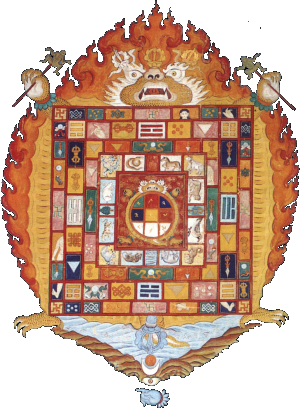 |
West |
| North East | North | North West |
The geomantic turtle has his tail to the north, his head to the south and his feet to the Northeast, Southeast, Southwest and Northwest.
The winddirections also represent the elements and seasons.
Earth occupies a special place with the elements as this element occurs four times in the cosmic turtle. The explanation for this is that the changing of the seasons occurs through the transition element Earth.
The reason that the South is drawn at the top is because all life depends on the sun and the rays of the sun come from above.
The cosmic turtle consists of: (from inside)
Mewas the inner circle

Animal Signs Tiger, Rabbit, Dragon, etc.
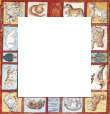
Parkhas also known as trigrams
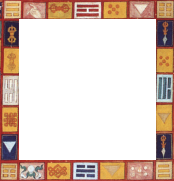
Elements / Wind direction Wood / East, Fire / South, etc.
The Parkhas positive and negative directions are used in relation to the variable Parkha to determine what the good and bad directions is for a given year.
The Parkhas have eight categories. Four are favorable and four are unfavorable.
The changing Parkha is compared with the other Parkhas. The geomantic turtle has 8 directions with each direction its own Parkha. Think of each Parkha grouped around the fixed Parkhas. Compare the variable parkha with other Parkhas in all directions.
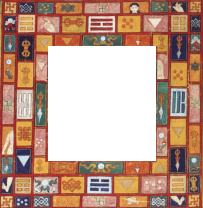
Day parkha
Every day has its own parkha with the following seqence:
Li – Khön – Da – Khen – Kham – Kin – Tsin – Zön
There are 8 Parkha's and 30 days each month and due to this every 120 days the same Parkha sequence appears. A year has 360 days and due to this also has the same Parkha days. When a day does not exist the Parkha count continues. On a double day the Parkha count of the previous day is taken.
Kham is the parkha of the first day for the monthes 1 (Dragon), 5 (Monkey) and 9 (Mouse).
Da is the parkha of the first day for the monthes 2 (Snake), 6 (Bird) and 10 (Ox).
Li is the parkha of the first day for the monthes 3 (Horse), 7 (Dog) and 11 (Tiger).
Tsin is the parkha of the first day for the monthes 4 (Sheep), 8 (Pig) and 12 (Rabbit).
 Tibetan Astrology
Tibetan Astrology

 Phugpa
Phugpa
 Lineair
Lineair
 Single zigzag
Single zigzag
 Full zigzag
Full zigzag